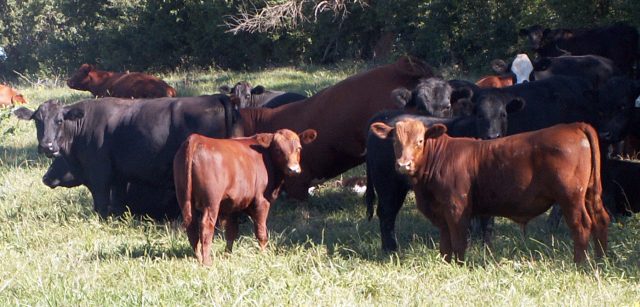Type the name of the breed you're looking for below
[wpdreams_ajaxsearchlite] Don't see the breed your're looking for? Click here and let us know!
Angus cattle
| Place of Origin | Scotland |
| Origin | Scotland For some time before the 1800s, the hornless cattle in Aberdeenshire and Angus were called Angus doddies. William McCombie of Tillyfour, M.P. for South Aberdeenshire at the end of the 19th century, who is today regarded as the father of the world famous Aberdeen-Angus breed of cattle. His favorite bull was Old Jock, which was born 1842 and sired by Grey-Breasted Jock. Grey-Breasted Jock was given the number "1" in the Scottish Herd Book when it was founded. Another of Watson's notable animals was a cow, Old Granny, which was born in 1824 and said to have lived to 50 years of age and to have produced 100 calves. The pedigrees of the vast majority of Angus cattle alive today can be traced back to these two animals. With the exception of Black Meg 43, more Angus cattle trace back to Old Granny than any other single cow of the breed, and she is considered by some as the founder of the breed. Australia Angus cattle were first introduced to Tasmania (then known as Van Diemen's Land) in the 1820s and to the southern mainland in 1840. The breed is now found in all Australian states and territories with 62,000 calves registered with Angus Australia in 2010. New Zealand Angus have been established as a breed in New Zealand for a century and a half. United States On May 17, 1873, George Grant brought four Angus bulls, but no cows, to Victoria, Kansas. He took the bulls to the fair in Kansas City where they were the topic of much conversation at a time when Shorthorns and Longhorns were the norm. The black hornless animals were often called "freaks" by those who saw them. The bulls were used only in crossbreeding and have no registered progeny today. However, their offspring left a favorable impression on the cattlemen of the time and soon more Angus cattle were imported from Scotland to form purebred herds. On November 21, 1883, the American Aberdeen Angus Association was founded in Chicago, Illinois, but the organization's name was shortened in the 1950s to the American Angus Association. The Association's first herd book was published on March 1, 1885. At this time both red and black animals were registered without distinction. However, in 1917 the Association barred the registering of red and other coloured animals in an effort to promote a solid black breed. Red Angus cattle occur as the result of a recessive gene. Breeders collecting red cattle from black herds began the Red Angus Association of America in 1954. Other countries such as the United Kingdom and Canada still register both colours in the same herd book. |
| Purpose | Angus cattle are widely used in crossbreeding to reduce the likelihood of dystocia (difficult calving). They are also used as a genetic dehorner as the polled gene is passed on as a dominant trait. During the later part of 2003 and the early part of 2004, the American fast food industry assisted in a public relations campaign to promote the supposedly superior quality of beef produced from Angus cattle (“Angus beef”). Back Yard Burger was the first such large scale product sold in the US, dating back to 2002. Angus burgers are also menu items for chains such as Hardee's and Canadian-based Harvey's. Beginning in 2006, McDonalds began testing hamburgers made with Angus beef at a number of its restaurants in several regions in the US; the company said that customer response to the burgers was positive and began selling the burger at all US locations in July 2009. At the same time, McDonald's Australia also began selling two variants of the burger, the Grand Angus and the Mighty Angus, using Australian-bred Angus, in their outlets. The American Angus Association set up the "Certified Angus Beef" (CAB) brand in 1978. The goal of this brand was to promote the idea that Angus beef was of higher quality than beef from other breeds of cattle. Cattle are eligible for "Certified Angus Beef" evaluation if they are at least 51% black and exhibit Angus influence, which include black Simmental cattle and crossbreds. However, they must meet all 10 of the following criteria, which were refined in January 2007 to further enhance product consistency, to be labeled "Certified Angus Beef" by USDA Graders: Modest or higher degree of marbling Medium or fine marbling texture "A" maturity 10 to 16 square-inch ribeye area Less than 1,000-pound hot carcass weight Less than 1-inch fat thickness Moderately thick or thicker muscling No hump on the neck exceeding 5 cm (2") Practically free of capillary rupture No dark cutting characteristics Usually black or red in colour |
| Appearance | There have always been both red and black individuals in the population. |
| Horns | Naturally polled (hornless) |
| Other Considerations | In 2014, British Cattle Movement Service named Angus the UK's most popular native beef breed, and the second most popular beef breed overall. |



